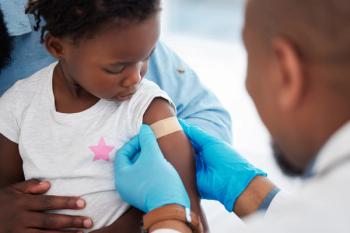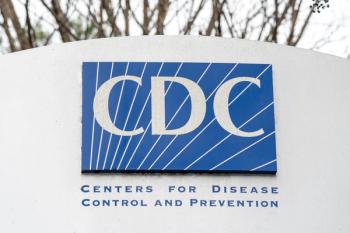
Emergent Laceration Closure
Dr Crane and Mr Schoonmaker, who were at the campground, write that an inordinate amount of highway traffic resulting from a local bikers' rally prevented them from transporting the patient to a medical facility. Emergent wound closure had to be performed with available materials. After the wound was flushed, a household cyanoacrylate adhesive, Krazy Glue, was used to close the laceration. To add lateral support and to reduce the risk of wound dehiscence, Dr Crane embedded hair trimmed from the patient's scalp into a second layer of glue. To replicate wound closure tape, the hair was applied perpendicular to the laceration. Azithromycin suspension was available; 1 tsp (5 mL) was given initially followed by 2.5 mL daily for 4 days.
Figure
FigureDuring a camping trip, a 7-year-old boy sustained a 1.5-cm laceration down to the bone above the left eyebrow. The laceration was clean and linear; it bled freely. The patient did not lose consciousness. The results of the neurological and musculoskeletal examinations were normal.
Dr Crane and Mr Schoonmaker, who were at the campground, write that an inordinate amount of highway traffic resulting from a local bikers' rally prevented them from transporting the patient to a medical facility. Emergent wound closure had to be performed with available materials. After the wound was flushed, a household cyanoacrylate adhesive, Krazy Glue, was used to close the laceration. To add lateral support and to reduce the risk of wound dehiscence, Dr Crane embedded hair trimmed from the patient's scalp into a second layer of glue. To replicate wound closure tape, the hair was applied perpendicular to the laceration. Azithromycin suspension was available; 1 tsp (5 mL) was given initially followed by 2.5 mL daily for 4 days.
After 2 days, the wound and the glued hair were intact, and no infection or inflammation was present (A). Two weeks after the injury, the wound had healed well with a good cosmetic result (B).
Newsletter
Access practical, evidence-based guidance to support better care for our youngest patients. Join our email list for the latest clinical updates.










